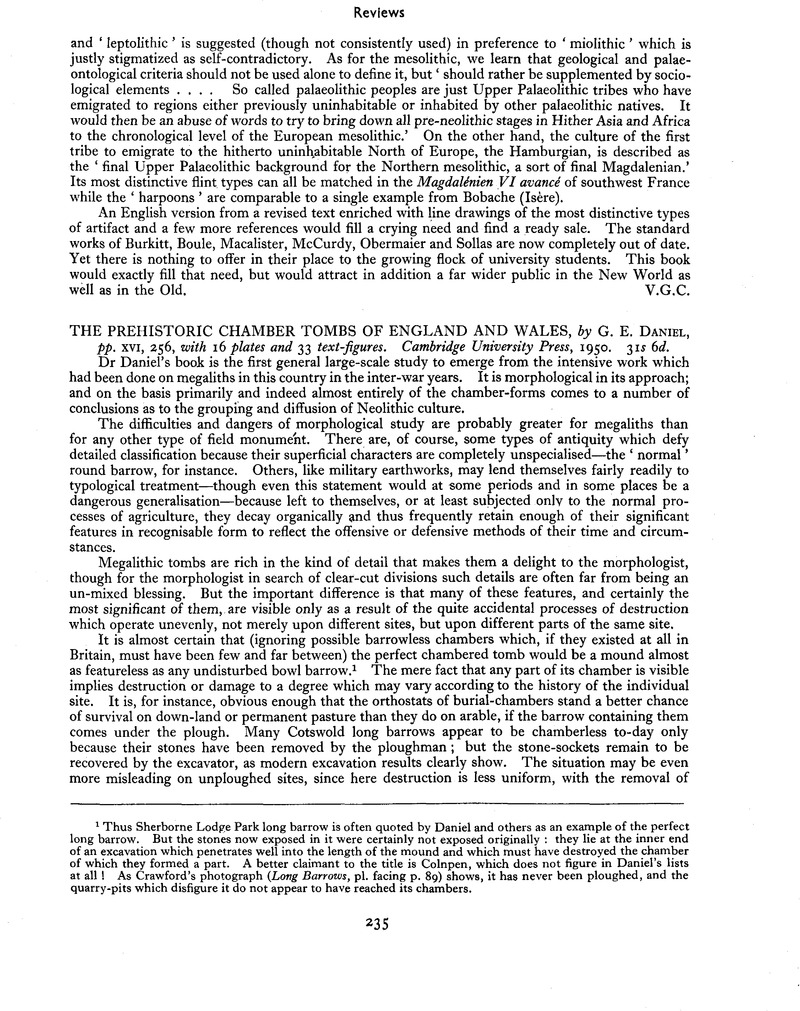No CrossRef data available.
Published online by Cambridge University Press: 27 May 2014

page 235 note 1 Thus Sherborne Lodge Park long barrow is often quoted by Daniel and others as an example of the perfect long barrow. But the stones now exposed in it were certainly not exposed originally: they lie at the inner end of an excavation which penetrates well into the length of the mound and which must have destroyed the chamber of which they formed a part. A better claimant to the title is Colnpen, which does not figure in Daniel's lists at all ! As Crawford's photograph (Long Barrows, pl. facing p. 89) shows, it has never been ploughed, and the quarry-pits which disfigure it do not appear to have reached its chambers.
page 237 note 1 Both plans as published by Dr Daniel are incomplete and this not because of the omission of details revealed by subsequent excavation. Elsewhere (p. 150) the chamber of Bedd-yr-afanc is grouped with Trefignath in Anglesey and Lanyon in Cornwall, all as ‘ordinary gallery-graves without forecourt or side chambers’ in long barrows. But whatever Lanyon may have been, Trefignath, ruined as it is, is an unmistakable segmented cist—a fact which is recognised on p. 151—while Bedd-yr-afanc is a simple ‘entrance grave.’
page 237 note 2 It is Barrow, Greenwell's 217 (British Barrows, pp. 447–52)Google Scholar; Sir Henry Dryden's plan and section are reproduced by Crawford, , Long Barrows, p. 91Google Scholar.
page 237 note 3 Arch. Camb., 1948, p. 28Google Scholar (n. 4).
page 237 note 4 Maes-y-fachrell (Great Orme) chamber is incomplete but is certainly not rectangular in plan.
page 237 note 5 The upper chamber at Rhiw is not a side- but an end-chamber complete with portal stones.